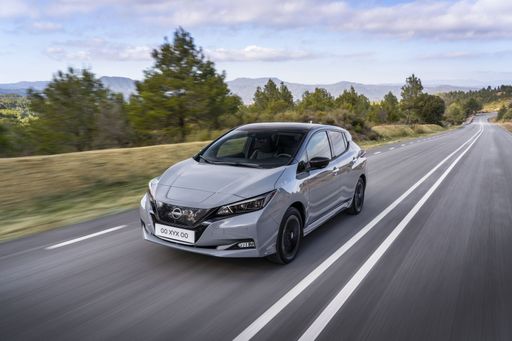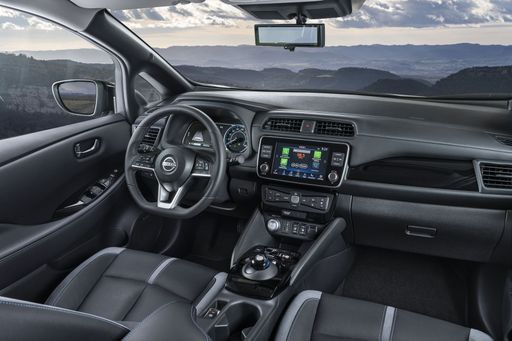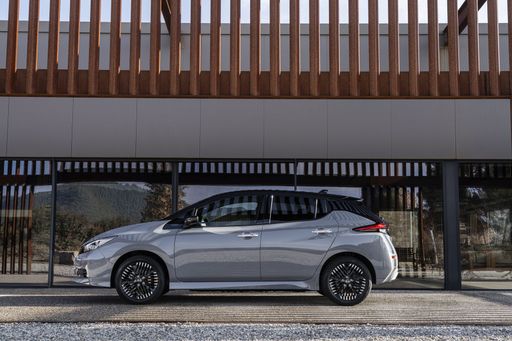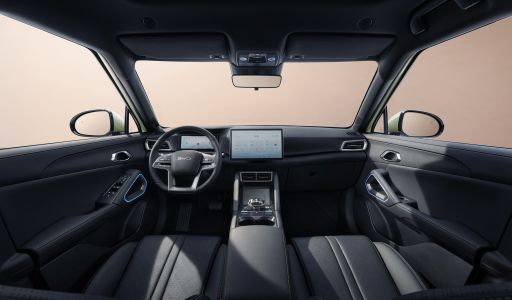Nissan Leaf vs BYD Atto 2 – Which model is better for everyday use?
Two cars, one duel: Nissan Leaf meets BYD Atto 2.
Which one wins in performance, efficiency and value for money? Find out now!
Costs and Efficiency:
Price and efficiency are often the first things buyers look at. Here it becomes clear which model has the long-term edge – whether at the pump, the plug, or in purchase price.
BYD Atto 2 has a slightly advantage in terms of price – it starts at 27400 £, while the Nissan Leaf costs 30800 £. That’s a price difference of around 3351 £.
In terms of energy consumption, the advantage goes to the BYD Atto 2: with 16 kWh per 100 km, it’s slight more efficient than the Nissan Leaf with 16.70 kWh. That’s a difference of about 0.70 kWh.
As for range, the Nissan Leaf performs a bit better – achieving up to 385 km, about 73 km more than the BYD Atto 2.
Engine and Performance:
Power, torque and acceleration are the classic benchmarks for car enthusiasts – and here, some clear differences start to show.
When it comes to engine power, the Nissan Leaf has a a bit edge – offering 217 HP compared to 177 HP. That’s roughly 40 HP more horsepower.
In acceleration from 0 to 100 km/h, the Nissan Leaf is to a small extent quicker – completing the sprint in 6.90 s, while the BYD Atto 2 takes 7.90 s. That’s about 1 s faster.
In terms of top speed, the BYD Atto 2 performs slight better – reaching 160 km/h, while the Nissan Leaf tops out at 157 km/h. The difference is around 3 km/h.
There’s also a difference in torque: Nissan Leaf pulls to a small extent stronger with 340 Nm compared to 290 Nm. That’s about 50 Nm difference.
Space and Everyday Use:
Whether family car or daily driver – which one offers more room, flexibility and comfort?
Both vehicles offer seating for 5 people.
In curb weight, BYD Atto 2 is hardly perceptible lighter – 1570 kg compared to 1580 kg. The difference is around 10 kg.
In terms of boot space, the BYD Atto 2 offers slight more room – 400 L compared to 394 L. That’s a difference of about 6 L.
In maximum load capacity, the BYD Atto 2 performs decisively better – up to 1340 L, which is about 550 L more than the Nissan Leaf.
When it comes to payload, Nissan Leaf minimal takes the win – 415 kg compared to 410 kg. That’s a difference of about 5 kg.
Who comes out on top?
Overall, the Nissan Leaf shows itself to be has the upper hand and secures the title of DriveDuel Champion.
It convinces with the more balanced overall package and proves to be the more versatile choice for everyday use.

Nissan Leaf
Nissan Leaf
The Nissan Leaf stands out as a pioneering model in the realm of electric vehicles, known for its impressive blend of practicality and eco-friendliness. It offers a smooth and quiet driving experience, making it an ideal choice for city commuting and longer journeys alike. The interior design is both comfortable and intuitive, providing drivers with a sense of modernity and ease of use.
details @ germany.nissannews.com
@ germany.nissannews.com
 @ germany.nissannews.com
@ germany.nissannews.com
 @ germany.nissannews.com
@ germany.nissannews.com
 @ germany.nissannews.com
@ germany.nissannews.com
BYD Atto 2
The Atto 2 is making waves in the electric vehicle market with its sleek design and impressive range. This innovative model combines cutting-edge technology with captivating aesthetics, making it a standout choice for eco-conscious drivers. With its spacious interior and advanced features, the Atto 2 offers both comfort and convenience for everyday use.
details @ BYD
@ BYD
 @ BYD
@ BYD

|

|
|
|
|
Costs and Consumption |
|
|---|---|
|
Price
30800 - 37200 £
|
Price
27400 - 30000 £
|
|
Consumption L/100km
-
|
Consumption L/100km
-
|
|
Consumption kWh/100km
16.7 - 17.8 kWh
|
Consumption kWh/100km
16 kWh
|
|
Electric Range
270 - 385 km
|
Electric Range
312 km
|
|
Battery Capacity
39 - 59 kWh
|
Battery Capacity
-
|
|
co2
0 g/km
|
co2
0 g/km
|
|
Fuel tank capacity
-
|
Fuel tank capacity
-
|
Dimensions and Body |
|
|---|---|
|
Body Type
Hatchback
|
Body Type
SUV
|
|
Seats
5
|
Seats
5
|
|
Doors
5
|
Doors
5
|
|
Curb weight
1580 - 1756 kg
|
Curb weight
1570 kg
|
|
Trunk capacity
385 - 394 L
|
Trunk capacity
400 L
|
|
Length
4490 mm
|
Length
4310 mm
|
|
Width
1788 mm
|
Width
1830 mm
|
|
Height
1540 - 1545 mm
|
Height
1675 mm
|
|
Max trunk capacity
790 L
|
Max trunk capacity
1340 L
|
|
Payload
384 - 415 kg
|
Payload
410 kg
|
Engine and Performance |
|
|---|---|
|
Engine Type
Electric
|
Engine Type
Electric
|
|
Transmission
Automatic
|
Transmission
Automatic
|
|
Transmission Detail
Reduction Gearbox
|
Transmission Detail
Reduction Gearbox
|
|
Drive Type
Front-Wheel Drive
|
Drive Type
Front-Wheel Drive
|
|
Power HP
150 - 217 HP
|
Power HP
177 HP
|
|
Acceleration 0-100km/h
6.9 - 7.9 s
|
Acceleration 0-100km/h
7.90 s
|
|
Max Speed
144 - 157 km/h
|
Max Speed
160 km/h
|
|
Torque
320 - 340 Nm
|
Torque
290 Nm
|
|
Number of Cylinders
-
|
Number of Cylinders
-
|
|
Power kW
110 - 160 kW
|
Power kW
130 kW
|
|
Engine capacity
-
|
Engine capacity
-
|
General |
|
|---|---|
|
Model Year
2019
|
Model Year
2025
|
|
CO2 Efficiency Class
A
|
CO2 Efficiency Class
A
|
|
Brand
Nissan
|
Brand
BYD
|
What drivetrain options does the Nissan Leaf have?
Available configurations include Front-Wheel Drive.
The prices and data displayed are estimates based on German list prices and may vary by country. This information is not legally binding.
